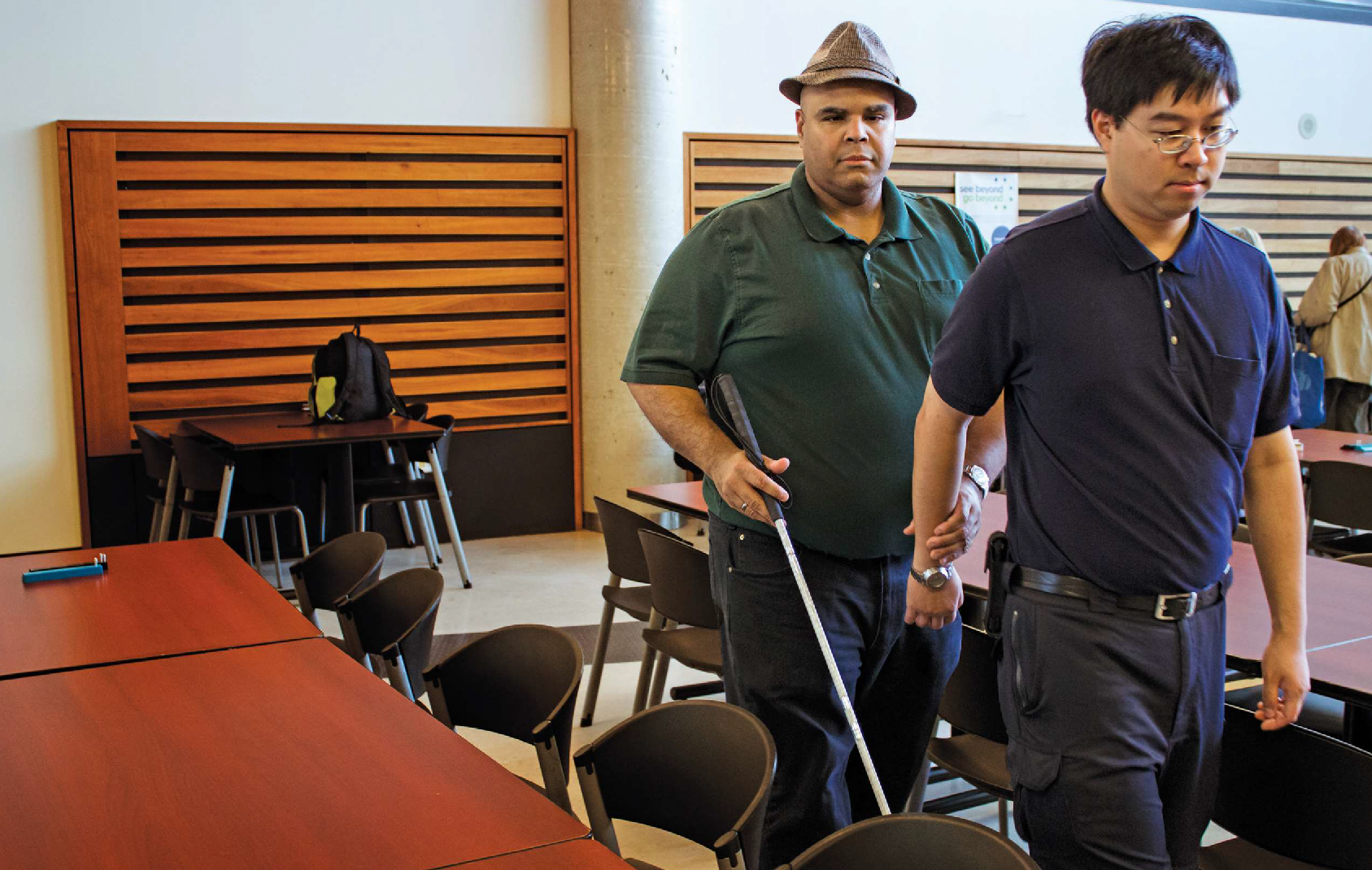How to safely and respectfully guide someone who is blind or Deafblind while walking

When acting as a sighted guide for a person who is Deafblind, follow the usual sighted guide procedure, but instead of verbally offering your assistance, you can initiate the greeting by lightly touching the person’s hand or shoulder. It’s important that you maintain contact until your presence is acknowledged. Otherwise, the other person may think your touch was accidental.
It is also important to identify yourself quickly and offer assistance in a clear and concise manner. If you don’t know the person’s preferred communication method, you can try the print-on-palm method, which is both easy to use and generally understood by people who are Deafblind. To use this method, print large capital letters onto their palm with the tip of your index finger, pausing between words.
Using the emergency X technique
During an emergency, it’s essential to act quickly and calmly. The universal sign for an emergency is an X on the back. In an emergency, such as a fire, draw a large X with your finger, covering the person’s entire back. This should alert them that they should follow you. You are now their sighted guide and responsible for guiding them to safety. You can provide a more detailed explanation if possible once you’re both out of danger.
If you’re guiding a person who is Deafblind, try not to leave them alone. If it’s necessary to leave for a few minutes, make sure the person knows where they are and when you’ll return. Have them wait in a safe area, such as on a bench or a wall to lean against.
